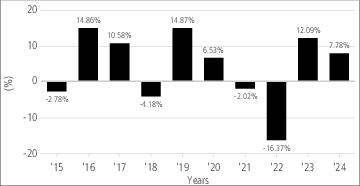
PIMCO Emerging Markets Bond Fund
Summary Prospectus
August 1,
2025
| Share Class: |
Inst |
I-2 |
I-3 |
A |
C |
| Ticker: |
PEBIX |
PEMPX |
PEBNX |
PAEMX |
PEBCX |
Before you invest, you may want to review the Fund’s prospectus, which, as supplemented, contains more information about the Fund and its risks. You can find the Fund’s prospectus, reports to shareholders and other information about the Fund online at
http://investments.pimco.com/prospectuses. You can also get this information at
no cost by calling 888.87.PIMCO or by sending an email request to piprocess@sscinc.com. The Fund’s prospectus and Statement of Additional Information, both dated August 1, 2025, as supplemented, are incorporated by reference into this Summary Prospectus.
Investment Objective
The Fund seeks maximum total return, consistent with preservation of
capital and prudent investment management.
Fees and Expenses of the Fund
This table describes the fees and expenses that you may pay if you buy, hold and sell shares of the Fund.
You may pay other fees, such as brokerage commissions and other
fees to financial intermediaries, which are not reflected in the table and example below.You may qualify for sales charge discounts if you and your family invest, or agree to invest in the future, at least $100,000 in Class A shares of eligible funds offered by PIMCO Equity Series and PIMCO Funds. More information about these and other discounts is available in the “Classes of Shares” section on page 66 of the Fund’s prospectus, Appendix B to the Fund’s prospectus (Financial Firm-Specific Sales Charge Waivers and Discounts) or from your financial professional.
Shareholder Fees (fees paid directly from your investment):
| |
Inst
Class |
I-2 |
I-3 |
Class A |
Class C |
| Maximum Sales Charge (Load) Imposed on
Purchases (as a percentage of offering price) |
None |
None |
None |
3.75% |
None |
| Maximum Deferred Sales Charge (Load) (as a
percentage of the lower of the original purchase
price or redemption price) |
None |
None |
None |
1.00% |
1.00% |
Annual Fund Operating Expenses (expenses that you pay each year as a
percentage of the value of your investment):
| |
Inst
Class |
I-2 |
I-3 |
Class A |
Class C |
| Management Fees |
0.83% |
0.93% |
1.03% |
0.95% |
0.95% |
| Distribution and/or Service (12b-1) Fees |
N/A |
N/A |
N/A |
0.25% |
1.00% |
| Other Expenses(1) |
0.36% |
0.36% |
0.36% |
0.36% |
0.36% |
| Total Annual Fund Operating Expenses |
1.19% |
1.29% |
1.39% |
1.56% |
2.31% |
| Fee Waiver and/or Expense Reimbursement(2) |
N/A |
N/A |
(0.05%) |
N/A |
N/A |
| Total Annual Fund Operating Expenses
After Fee Waiver and/or Expense
Reimbursement |
1.19% |
1.29% |
1.34% |
1.56% |
2.31% |
1
“Other Expenses” include interest expense of 0.36%. Interest expense is
borne by the Fund separately from the management fees paid to Pacific Investment Management Company
LLC (“PIMCO”). Excluding interest expense, Total Annual Fund Operating
Expenses After Fee Waiver
and/or Expense Reimbursement are 0.83%, 0.93%, 0.98%, 1.20% and 1.95% for Institutional Class, I-2, I-3, Class A and Class C shares, respectively.
2
PIMCO has contractually agreed, through July 31, 2026, to reduce its supervisory and administrative fee for the Fund’s I-3 shares by 0.05% of the average daily
net assets attributable to I-3 shares of the Fund. This Fee Waiver Agreement renews annually unless
terminated by PIMCO upon at least 30 days’ prior notice to the end of the contract term.
Example. The Example is intended to help you compare the cost of investing in Institutional Class, I-2, I-3, Class A or Class C shares of the Fund with the costs of investing
in other mutual funds. The Example assumes that you invest $10,000 in the noted class of shares for the time periods indicated, and then hold or redeem all your shares at the end of those periods. The Example also
assumes that your investment has a 5% return each year and that the Fund’s operating expenses
remain the same. Although your actual costs may be higher or lower, based on these assumptions
your costs would be:
If you redeem your shares at
the end of each period:
| |
1 Year |
3 Years |
5 Years |
10 Years |
| Institutional Class |
$121 |
$378 |
$654 |
$1,443 |
| I-2 |
$131 |
$409 |
$708 |
$1,556 |
| I-3 |
$136 |
$435 |
$756 |
$1,664 |
| Class A |
$528 |
$849 |
$1,193 |
$2,162 |
| Class C |
$334 |
$721 |
$1,235 |
$2,458 |
If you do not redeem your shares:
| |
1 Year |
3 Years |
5 Years |
10 Years |
| Class A |
$528 |
$849 |
$1,193 |
$2,162 |
| Class C |
$234 |
$721 |
$1,235 |
$2,458 |
Portfolio Turnover
The Fund pays transaction costs when it buys and sells securities (or “turns over” its portfolio).
A higher portfolio turnover rate may indicate higher transaction costs and may result in higher taxes when Fund shares are held in a taxable account. These costs, which are not reflected in the Annual Fund Operating
Expenses or in the Example tables, affect the Fund’s performance. During the most recent fiscal year, the Fund’s portfolio turnover rate was 67% of the average value of its portfolio.
Principal Investment Strategies
The Fund seeks to achieve its investment objective by investing under normal circumstances at least 80% of its assets in Fixed Income Instruments that are economically tied to
emerging market countries, which may be represented by forwards or derivatives such as options,
futures contracts or swap agreements. “Fixed Income Instruments” include bonds, debt
securities and other similar instruments issued by various U.S. and non-U.S. public- or private-sector entities. Such instruments may be denominated in non-U.S. currencies and the U.S. dollar. The average portfolio duration of
this Fund normally varies within two years (plus or minus) of the portfolio duration of the
securities comprising the JPMorgan Emerging Markets Bond Index (EMBI) Global, as calculated by
PIMCO, which as of May 31, 2025 was
PIMCO Funds | Summary Prospectus





